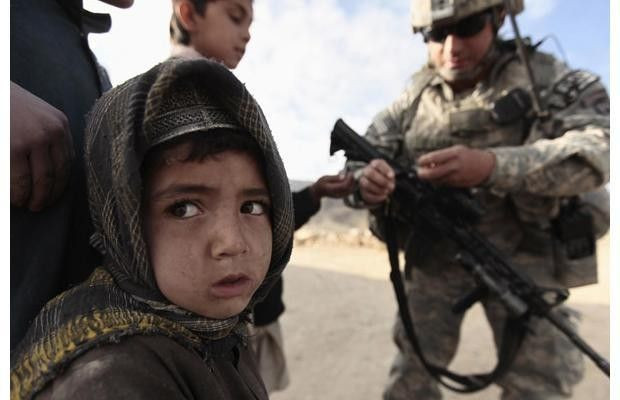Afghanistan: Child Malnourishment At Disturbingly High Levels As Foreign Aid, Investment Eases

A new report from UNICEF and the Afghan Central Statistic Organization said that levels of child malnourishment in certain parts of Afghanistan greatly resemble what is seen in parts of Africa and other areas suffering from famine.
The report says that over 30 percent of children under five in parts of Afghanistan are moderately to severely underweight, and that child mortality under age five is around 102 per thousand live births. In comparison, the infant mortality rate in the U.S. is about seven per thousand live births, according to the World Bank. The report comes as worldwide investment in Afghan infrastructure has begun to drop.
According to UNICEF, 40 percent of children under the age of three in Afghanistan are, in fact, moderately or severely underweight, and 50 percent of children under three are severely stunted. Also, many Afghans have poor dietary diversity -- most people subsist on a diet of cereals, and food production mostly involve wheat, fruit, and nuts, according to the UN.
As of 2009, the country still had the highest levels of infant and child mortality in the 'East Mediterranean Region,' according to the World Health Organization. And UNICEF still ranks it as #11 in under-five mortality.
From 2006 to 2008, UNICEF reported that the country experienced a series of serious droughts, flash floods, and heavy snowfall that severely affected the country's ability to grow and import food. Climate change and increasing food prices also make growing, selling, and buying food more difficult worldwide, not to mention in Afghanistan, which is ranked 110th in wealth worldwide.
In addition, foreign investment in Afghanistan has been steadily dropping in recent years, despite the ongoing war, potentially fueling an ongoing food crisis.
The total level of assistance provided to Afghanistan as of 2010 amounted to $10.9 billion,$ 2.8 billion of which went to the capital, Kabul. Herat, designated by the UN Development Program as one of the most "severely malnourished and least food diverse provinces," received only $629 million in aid. The other four provinces designated by the UN Development Program as most malnourished -- Ghor, Laghman, Khost, and Uruzgan -- were not even in the top 10 of areas that received US aid.
Levels of loans and investments in Afghanistan have also dropped in the past year. A UNDP report said that aid predictability to Afghanistan was precipitously low: in 2011, Afghanistan received $4.4 billion in aid from their development partners, but in 2012 the government is predicted to only receive $1.2 billion, and less than $700 million in 2013.
Between 2002 and 2010, only $28.1 billion of a promised $37.6 billion in aid for reconstruction and development of Afghan infrastructure was actually disbursed. For comparison's sakes, the CIA estimated Afghanistan's GDP as $30.11 billion as of 2011.
© Copyright IBTimes 2025. All rights reserved.






















